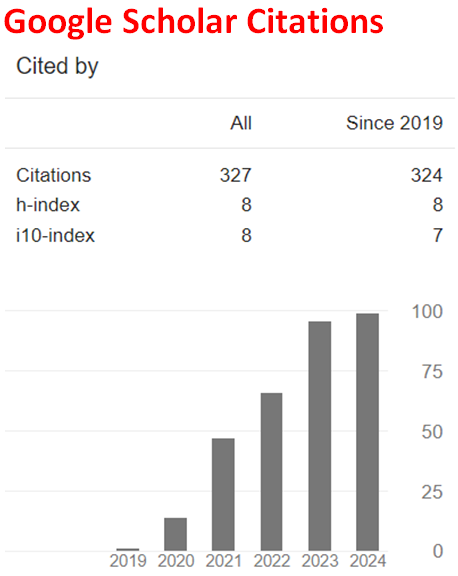Tautomerism in Pindone – A DFT Study
Abstract
Pindone is a rodenticide having three keto groups in its structure. Presently, 1,3-type keto-enol tautomerism of pindone has been studied within the constraints of density functional theory at the level of B3LYP/6-311++G(d,p). Various structural and quantum chemical properties of these tautomers have been obtained, compared and discussed. Endocyclic and exocyclic enol forms of pindone are accompanied by dipole moment vectors having opposite directions. The endocyclic enol structure is found to be more stable than the exocyclic enol and pindone. IR and UV-VIS spectra are obtained. NICS(0) values are calculated to visualize the effect of tautomerism on the local aromaticity of the structures considered.
Downloads
References
R. Cremlyn, Pesticides; Preparation and Mode of Action, NY: Wiley, 1978.
J. R. Beauregard, T. W. Tusing and R. F. Hanzal, Anticoagulant rodenticide, toxicity and antidotal studies on 2-pivalyl-1,3-indandione (pival), an anticoagulant rodenticide, J. Agric. Food Chem. 32 (1955), 124-127. https://doi.org/10.1021/jf60048a002
C. T. Eason and S. E. Jolly, Anticoagulant effects of pindone in the rabbit and Australian Bushtail Possum, Wildlife Research 20(3) (1993), 371-374. https://doi.org/10.1071/WR9930371
G. R. Martin, R. J. Sutherland, I. D. Robertson, D. R. King and P. J. Hood, Assessment of the potential toxicity of a poison for rabbits, pindone (2-pivalyl 1, 3 indandione), to domestic animals, Australian Veterinary Journal 68(7) (1991), 241-243. https://doi.org/10.1111/j.1751-0813.1991.tb03217.x
M. H. Robinson, L. E. Twigg, S. H. Wheeler and G. R. Martin, Effect of the anticoagulant, pindone, on the breeding performance and survival of merino sheep, Ovis aries, Comparative Biochemistry and Physiology Part B: Biochemistry and Molecular Biology 140(3) (2005), 465-73. https://doi.org/10.1016/j.cbpc.2004.11.011
B. Sendra, S. Panadero and A. Gómez-Hens, Determination of pindone in baits by using time-resolved lanthanide-sensitized luminescence and kinetic methodology, Analytical Letters 32(9) (1999), 1835-1846. https://doi.org/10.1080/00032719908542937
I. Csöregh and R. Norrestam, The crystal and molecular structure of 2-pivaloyl-1,3-indandione, Acta Cryst. B32 (1976), 2450-2455. https://doi.org/10.1107/S0567740876007954
J. D. Pipkin and V. J. Stella, Tautomerism of phenindione, 2-phenyl-1,3-indandione, in dipolar aprotic/hydrocarbon solvent mixtures, J. Am. Chem. Soc. 10424 (1982), 6672-6680. https://doi.org/10.1021/ja00388a033
N. Hocaoǧlu, T. Uyar and L. Türker, The syntheses of some novel 2-substituted phenylazo-1,3-indandiones, Dyes and Pigments 12(3) (1990), 187-195. https://doi.org/10.1016/0143-7208(90)85011-C
V. Enchev, MNDO and AM1 quantum-chemical study of tautomerism of 2-substituted 1,3-lndandiones, Chem. Papers 48 (4) (1994), 219-222.
M. V. Sigalov, Keto-enol tautomerism of phenindione and its derivatives: an NMR and density functional theory (DFT) reinvestigation, J. Phys. Chem. A 119 (2015), 1404-1414. https://doi.org/10.1021/jp512461c
J. J. P. Stewart, Optimization of parameters for semiempirical methods I. Method, J. Comput. Chem. 10 (1989), 209-220. https://doi.org/10.1002/jcc.540100208
J. J. P. Stewart, Optimization of parameters for semi empirical methods II. Application, J. Comput. Chem. 10 (1989), 221-264. https://doi.org/10.1002/jcc.540100209
A. R. Leach, Molecular Modeling, Essex: Longman, 1997.
P. Fletcher, Practical Methods of Optimization, New York: Wiley, 1990.
W. Kohn and L. Sham, Self-consistent equations including exchange and correlation effects, J. Phys. Rev. 140 (1965), 1133-1138. https://doi.org/10.1103/PhysRev.140.A1133
R. G. Parr and W. Yang, Density Functional Theory of Atoms and Molecules, London: Oxford University Press, 1989.
A. D. Becke, Density-functional exchange-energy approximation with correct asymptotic behavior, Phys. Rev. A 38 (1988), 3098-3100. https://doi.org/10.1103/PhysRevA.38.3098
S. H. Vosko, L. Wilk and M. Nusair, Accurate spin-dependent electron liquid correlation energies for local spin density calculations: a critical analysis, Can. J. Phys. 58 (1980), 1200-1211. https://doi.org/10.1139/p80-159
C. Lee, W. Yang and R. G. Parr, Development of the Colle-Salvetti correlation-energy formula into a functional of the electron density, Phys. Rev. B 37 (1988), 785-789. https://doi.org/10.1103/PhysRevB.37.785
SPARTAN 06, Wavefunction Inc., Irvine CA, USA, 2006.
M. J. Frisch, G. W. Trucks, H. B. Schlegel, G. E. Scuseria, M. A. Robb, J. R. Cheeseman, J. A. Montgomery, Jr., T. Vreven, K. N. Kudin, J. C. Burant, J. M. Millam, S. S. Iyengar, J. Tomasi, V. Barone, B. Mennucci, M. Cossi, G. Scalmani, N. Rega, G. A. Petersson, H. Nakatsuji, M. Hada, M. Ehara, K. Toyota, R. Fukuda, J. Hasegawa, M. Ishida, T. Nakajima, Y. Honda, O. Kitao, H. Nakai, M. Klene, X. Li, J. E. Knox, H. P. Hratchian, J. B. Cross, V. Bakken, C. Adamo, J. Jaramillo, R. Gomperts, R. E. Stratmann, O. Yazyev, A. J. Austin, R.Cammi, C. Pomelli, J. W. Ochterski, P. Y. Ayala, K. Morokuma, G. A. Voth, P. Salvador, J. J. Dannenberg, V. G. Zakrzewski, S. Dapprich, A. D. Daniels, M. C. Strain, O. Farkas, D. K. Malick, A. D. Rabuck, K. Raghavachari, J. B. Foresman, J. V. Ortiz, Q. Cui, A. G. Baboul, S. Clifford, J. Cioslowski, B. B. Stefanov, G. Liu, A. Liashenko, P. Piskorz, I. Komaromi, R. L. Martin, D. J. Fox, T. Keith, M. A. Al-Laham, C. Y. Peng, A. Nanayakkara, M. Challacombe, P. M. W. Gill, B. Johnson, W. Chen, M. W. Wong, C. Gonzalez and J. A. Pople, Gaussian, Inc., Wallingford CT, 2004.
I. Fleming, Frontier Orbitals and Organic Chemical Reactions, London: Wiley, 1976.
Spartan, Molecular Modeling in Physical Chemistry, Irvine: Wavefunction Inc., USA, 2005.
H. Jiao and P. R. Schleyer, Aromaticity of pericyclic reaction transition structures: magnetic evidence, J. Phys. Org. Chem. 11 (1998), 655-662. https://doi.org/10.1002/(SICI)1099-1395(199808/09)11:8/9<655::AID-POC66>3.0.CO;2-U
P. R. Schleyer, B. Kiran, D. V. Simion and T. S. Sorensen, Does Cr(CO)3 complexation reduce the aromaticity of benzene?, J. Am. Chem. Soc. 122 (2000), 510-513. https://doi.org/10.1021/ja9921423
D. Quinonero, C. Garau, A. Frontera, P. Ballaster, A. Costa and P. M. Deya, Quantification of aromaticity in oxocarbons: The problem of the fictitious “nonaromatic” reference system, Chem. Eur. J. 8 (2002), 433-438. https://doi.org/10.1002/1521-3765(20020118)8:2<433::AID-CHEM433>3.0.CO;2-T
S. Patchkovskii and W. Thiel, Nucleus-independent chemical shifts from semiempirical calculations, J. Mol. Model. 6 (2002), 67-75. https://doi.org/10.1007/PL00010736
F. A. Carey and T. J. Sundberg, Advanced Organic Chemistry A, NY: Kluwer-Plenum, 2000.

This work is licensed under a Creative Commons Attribution 4.0 International License.


